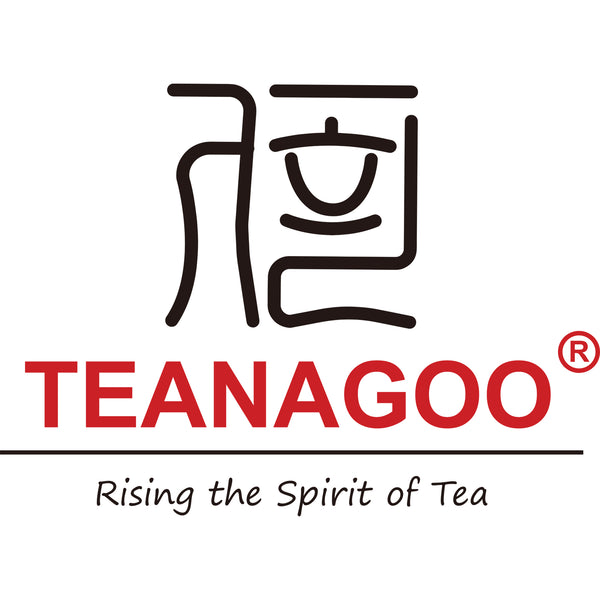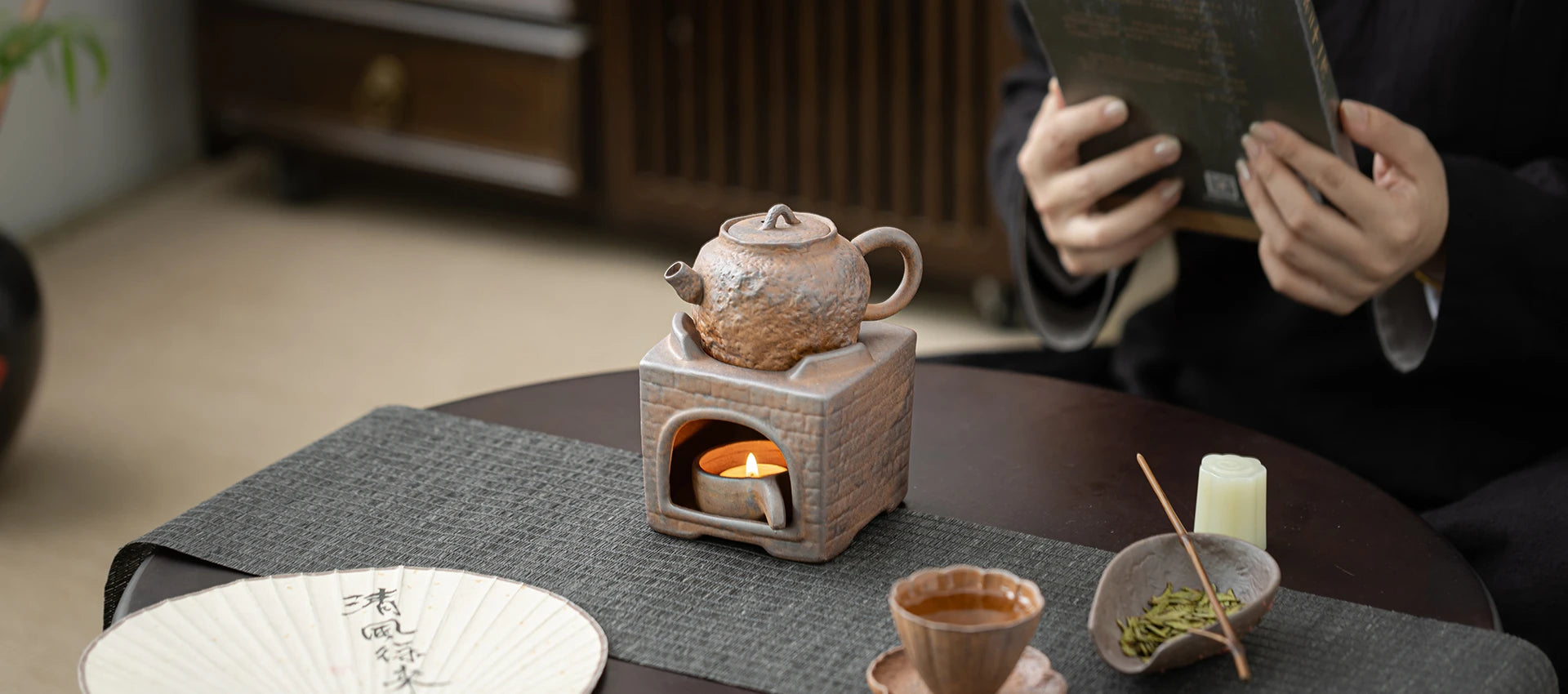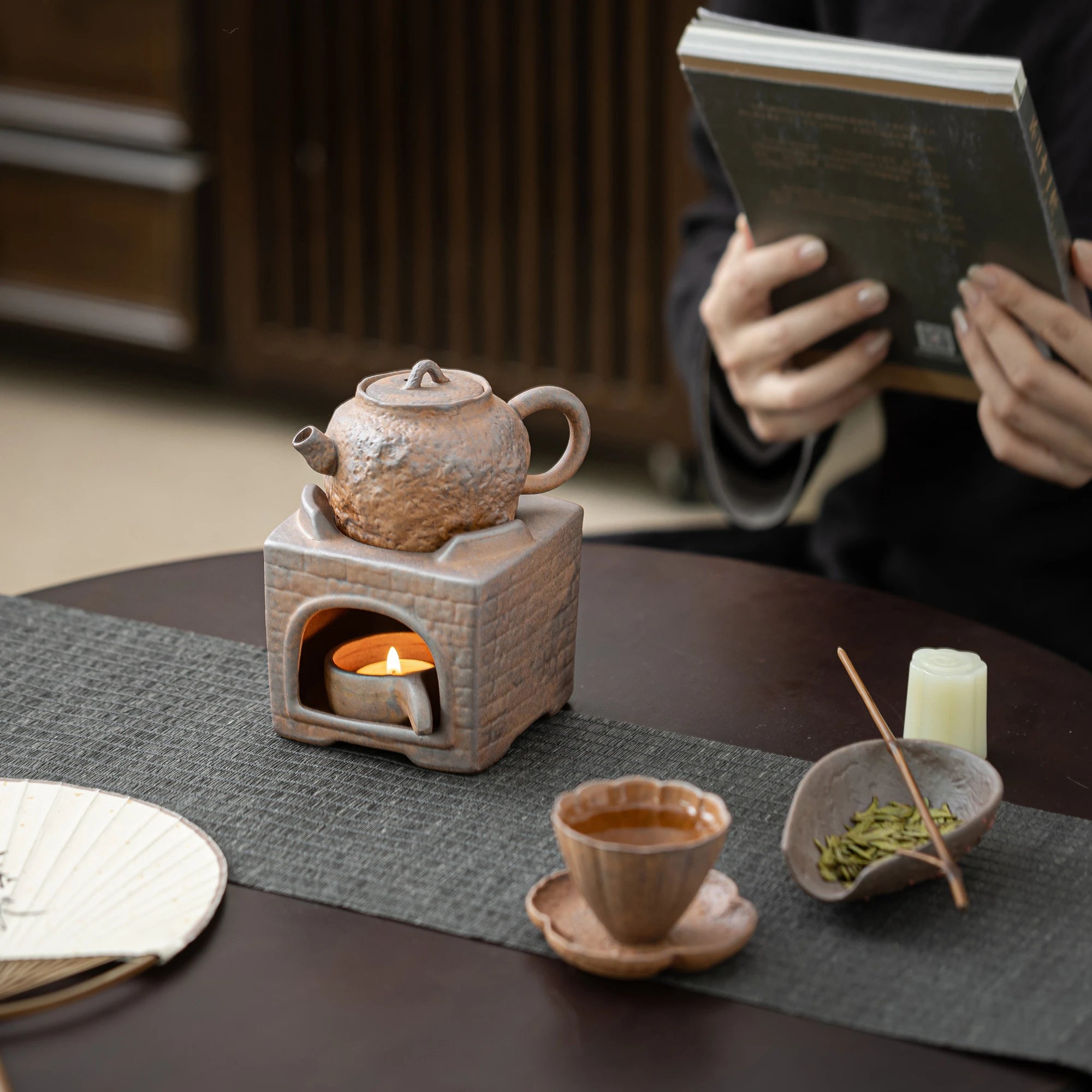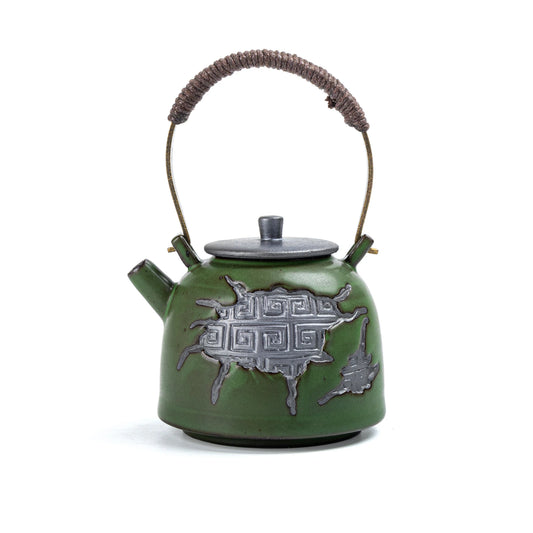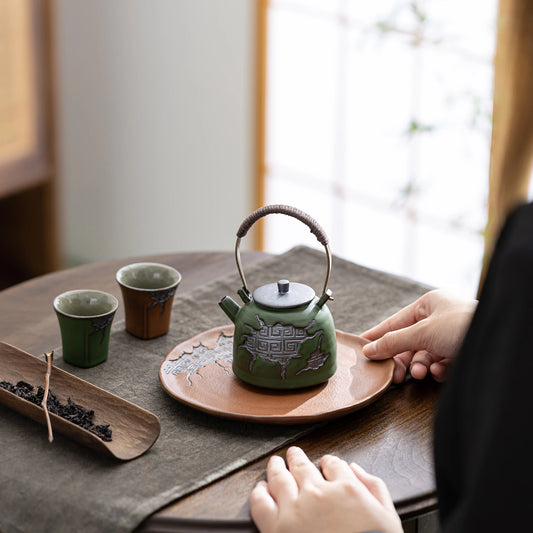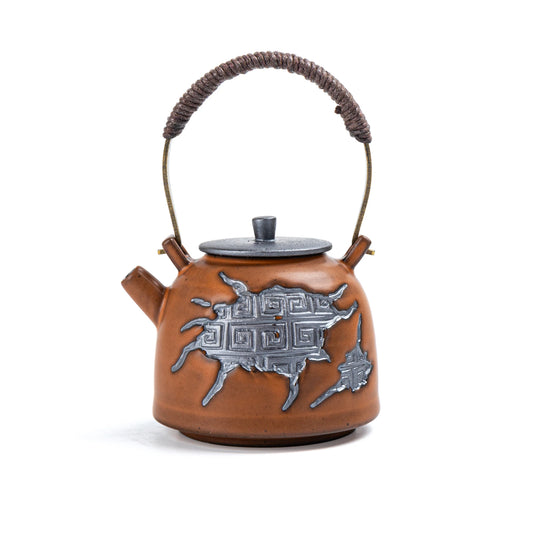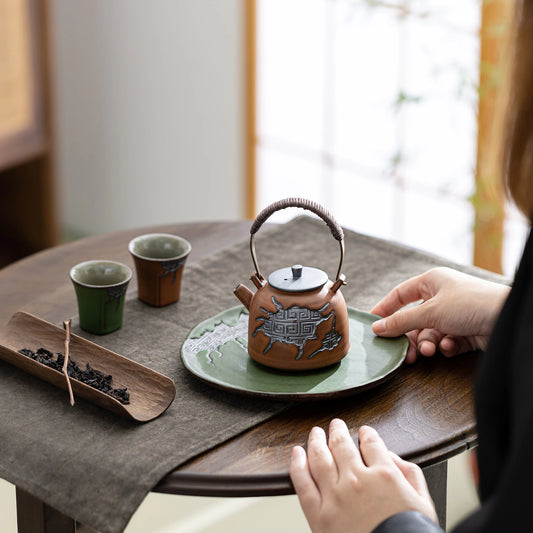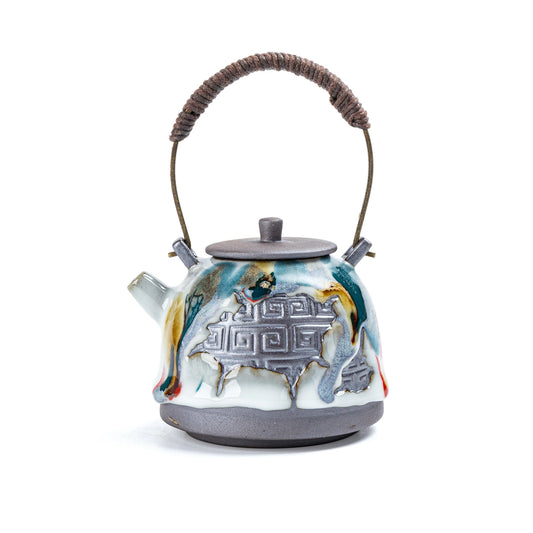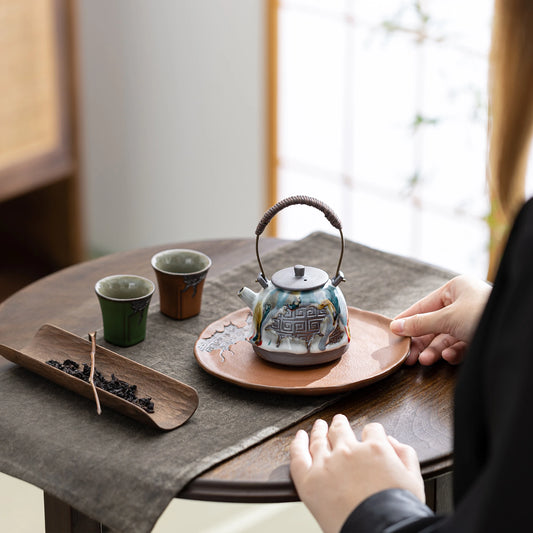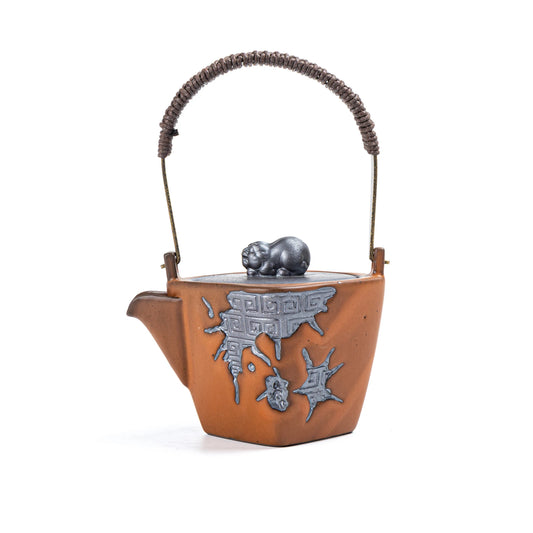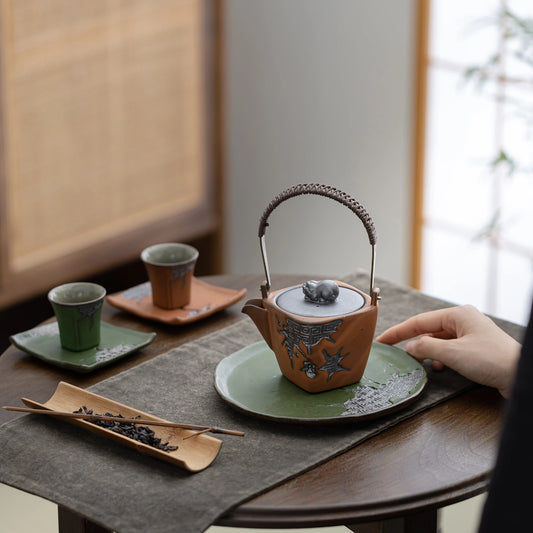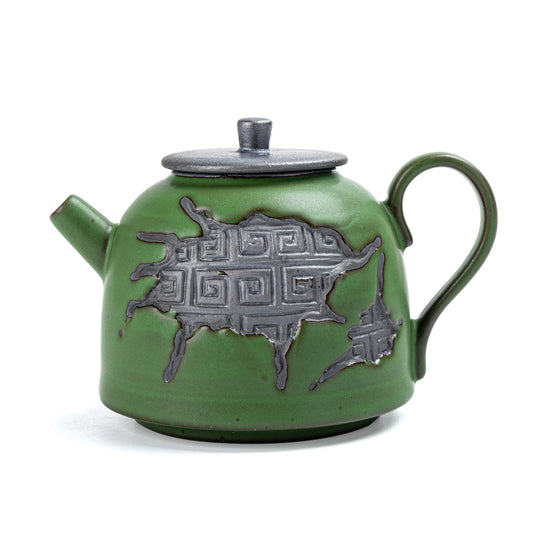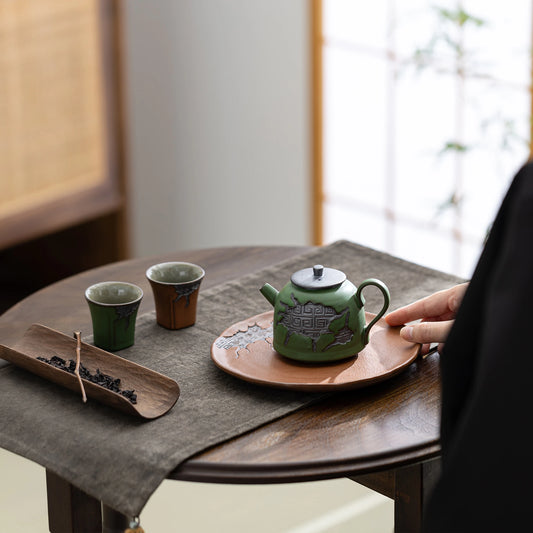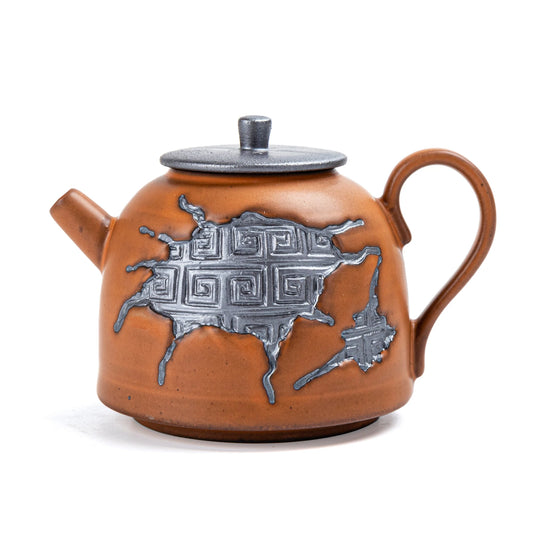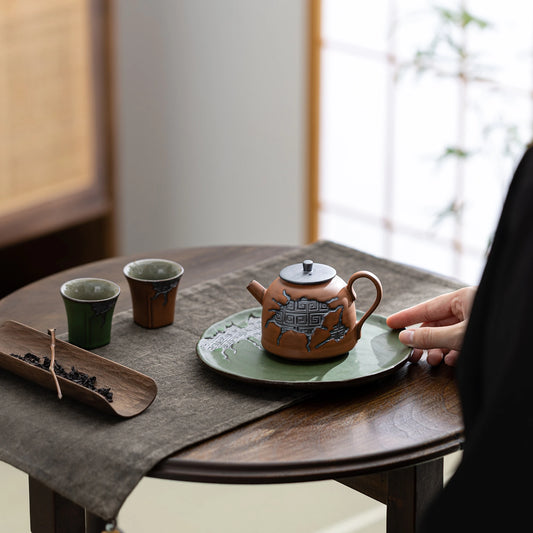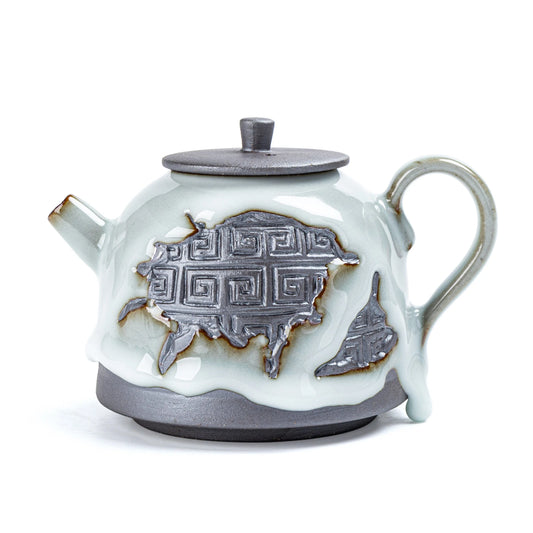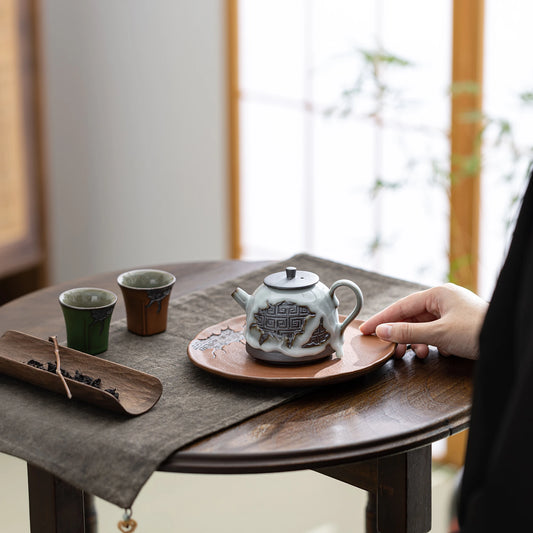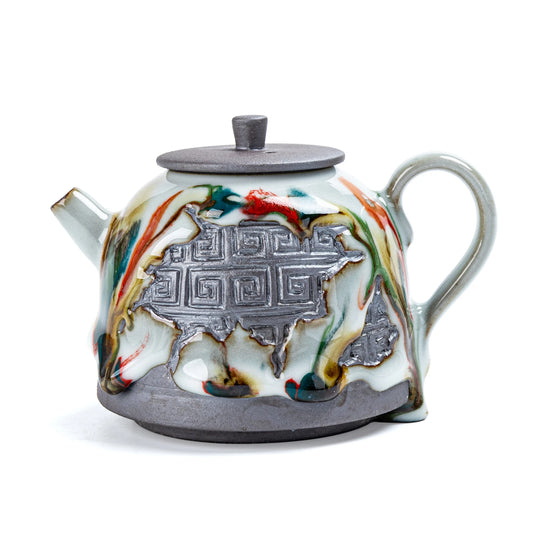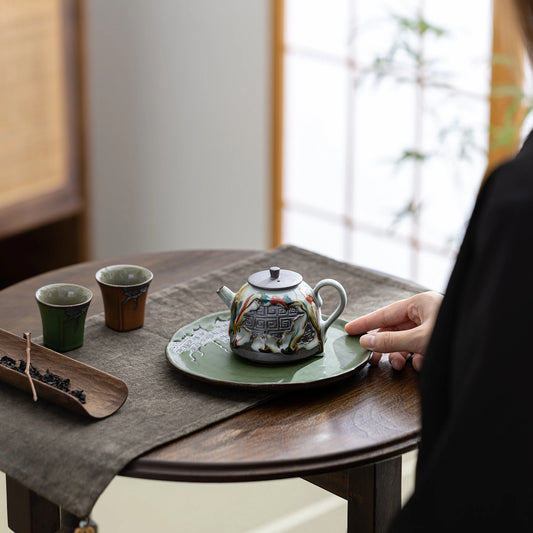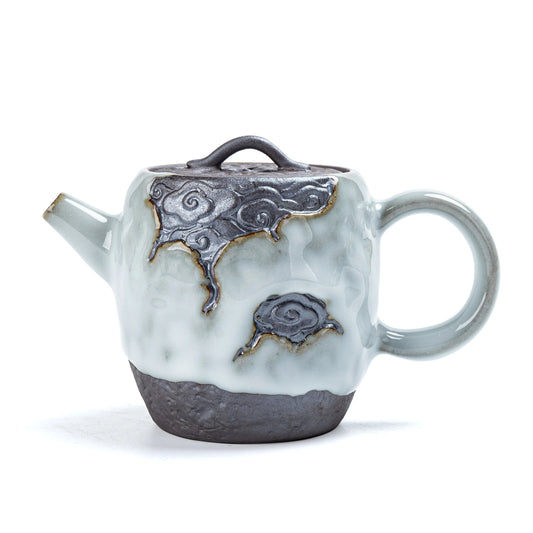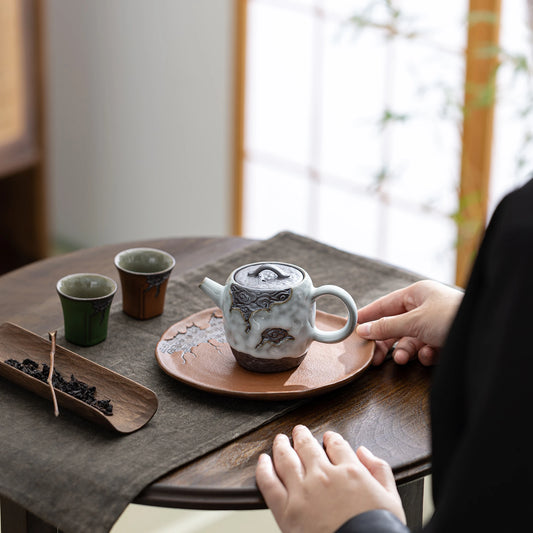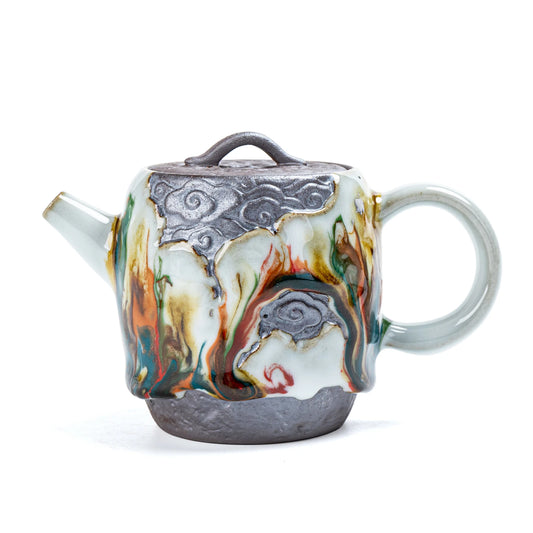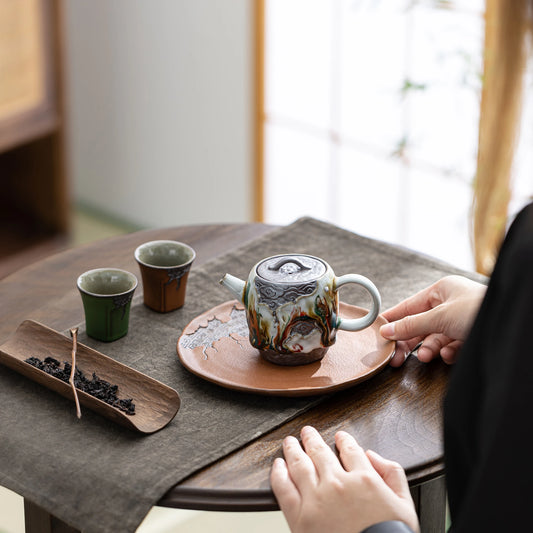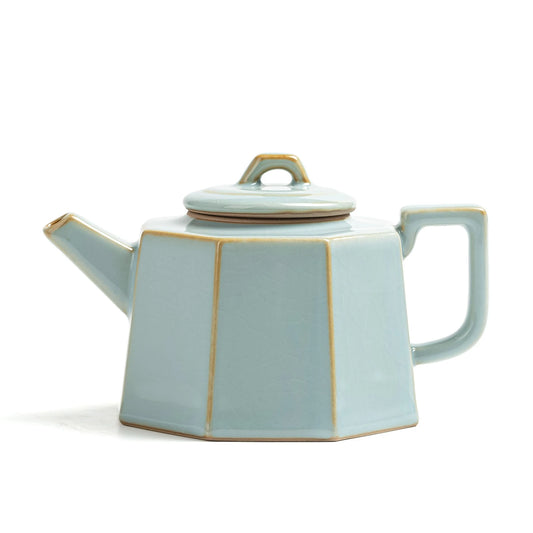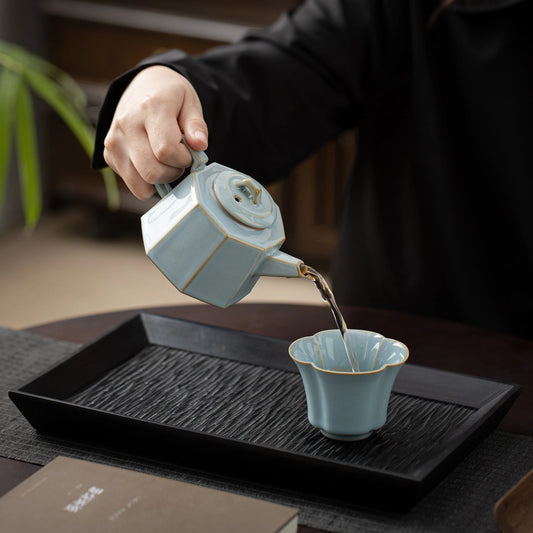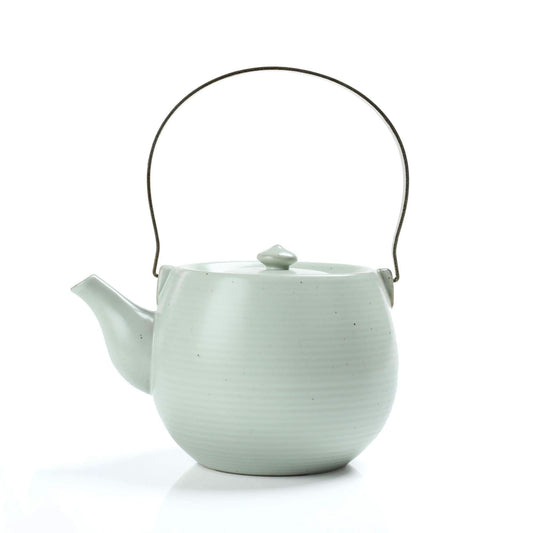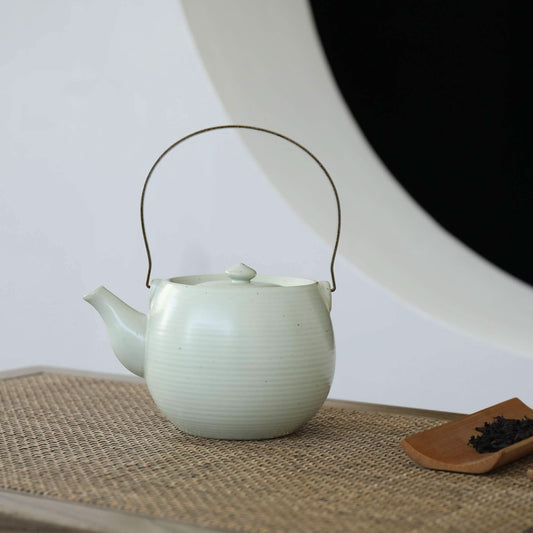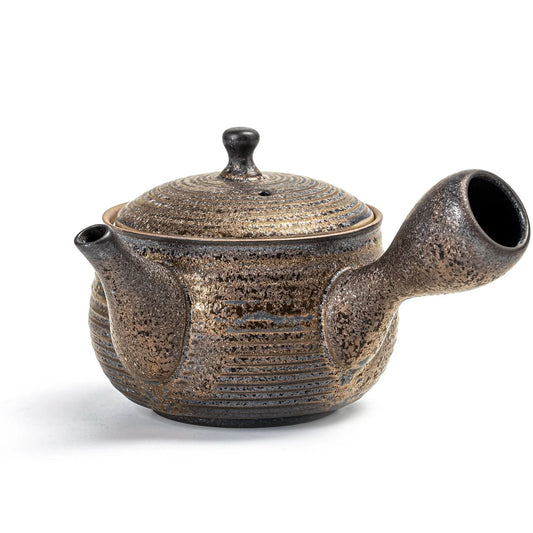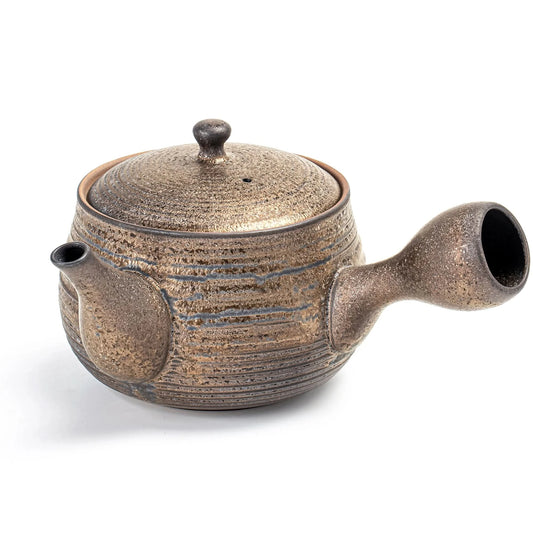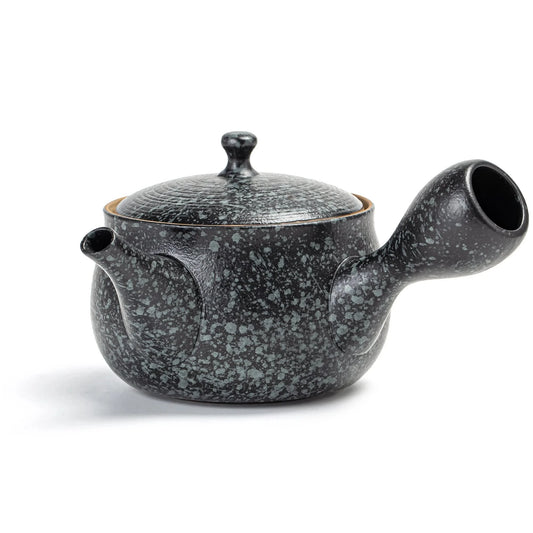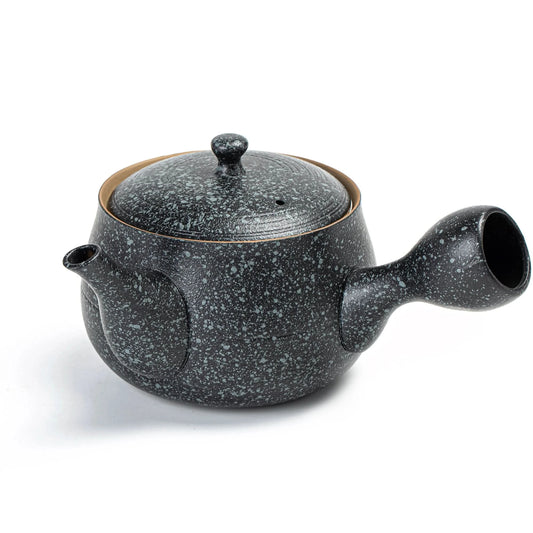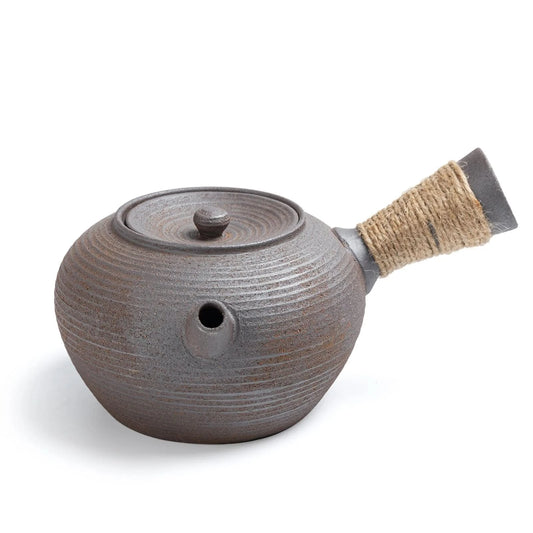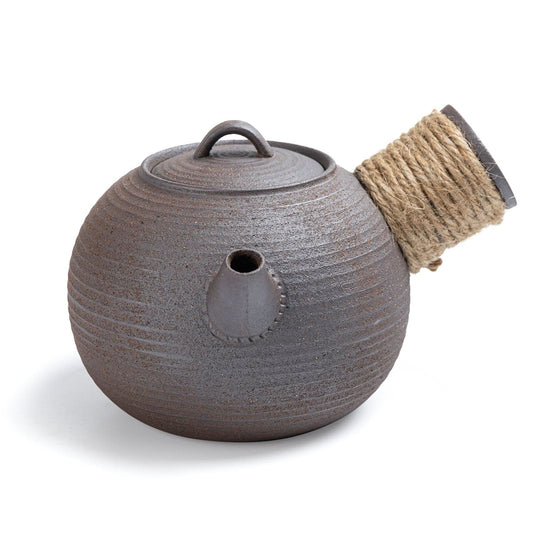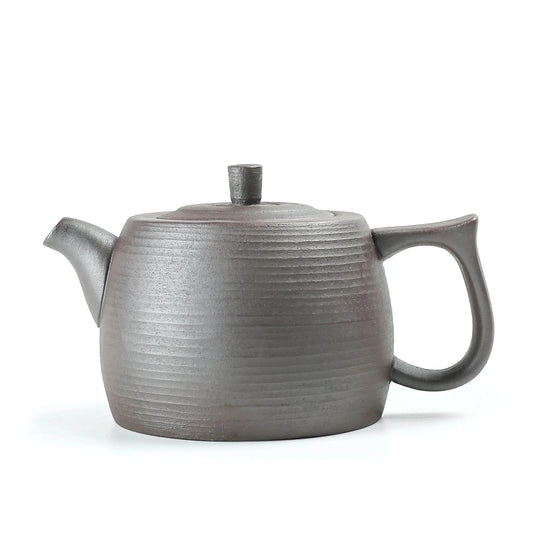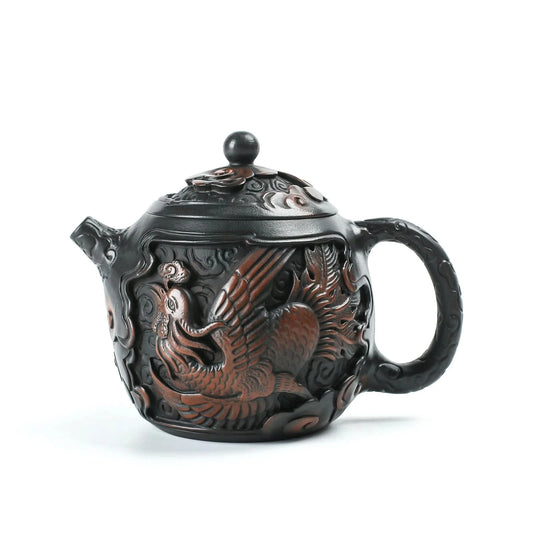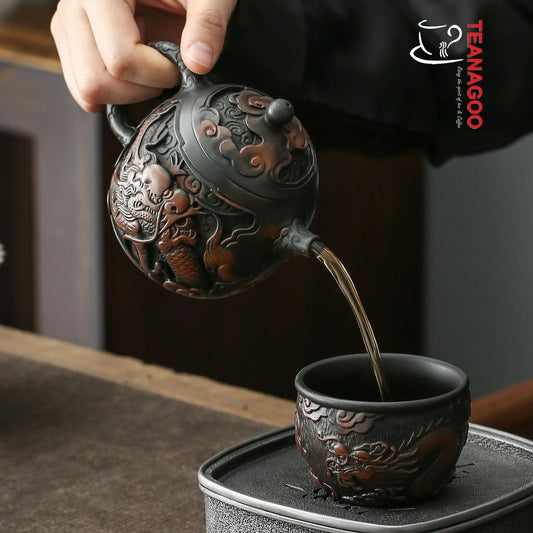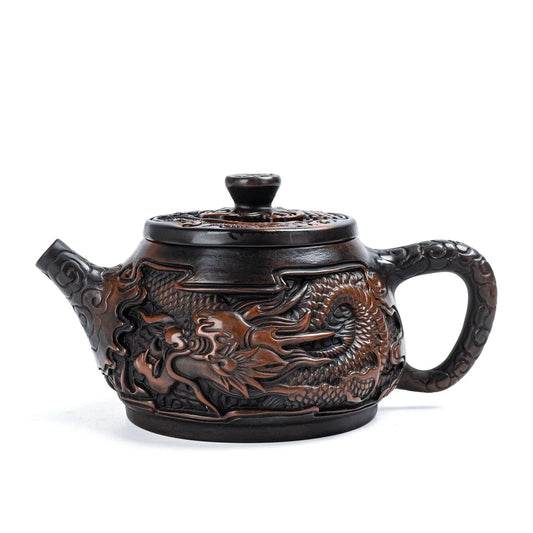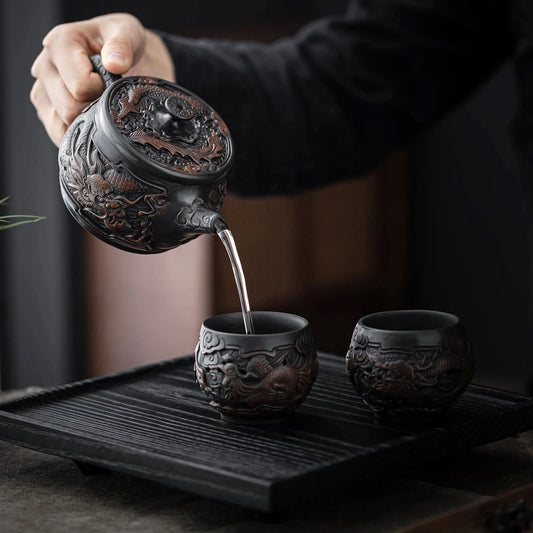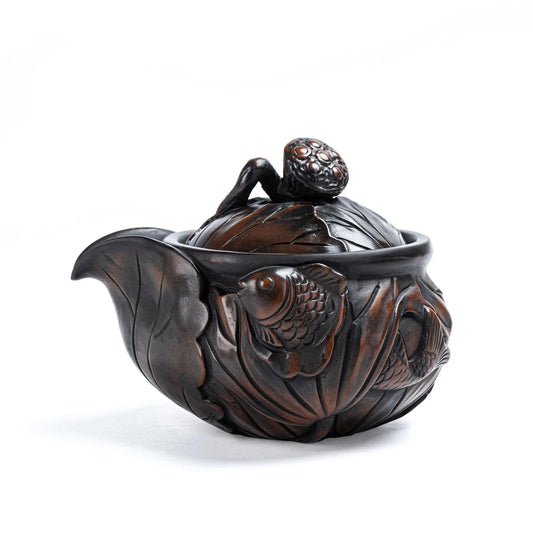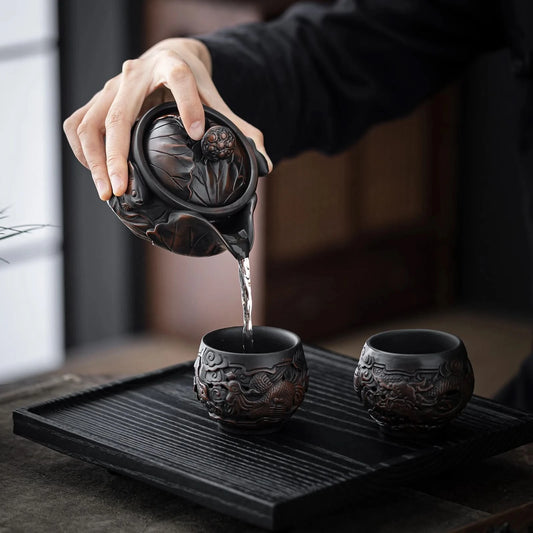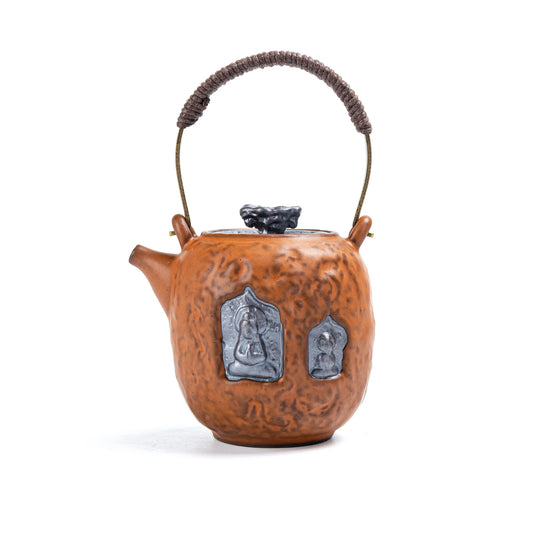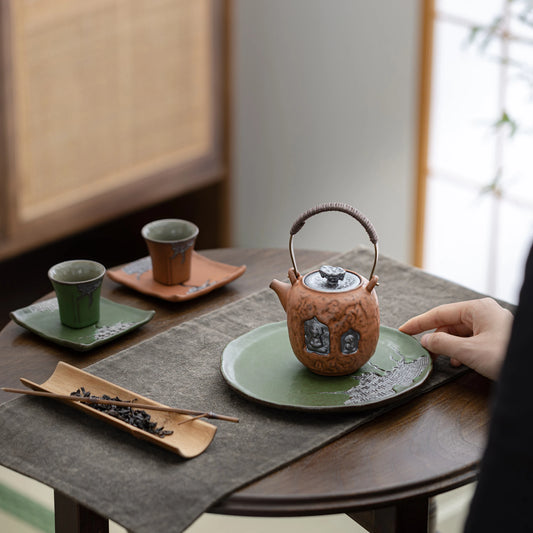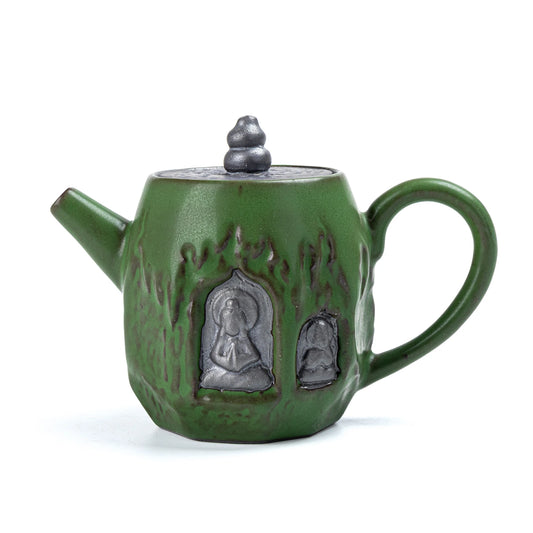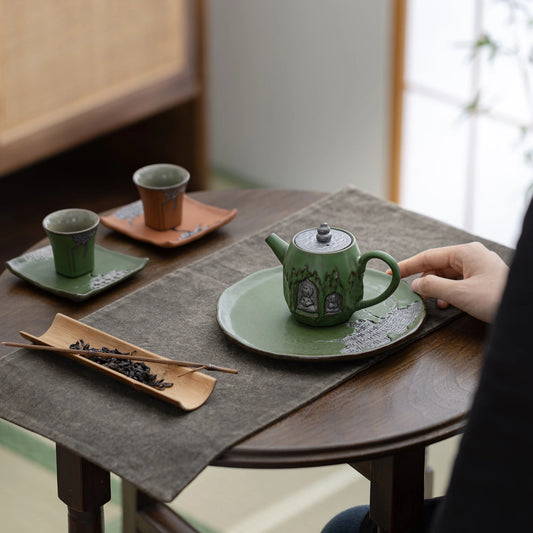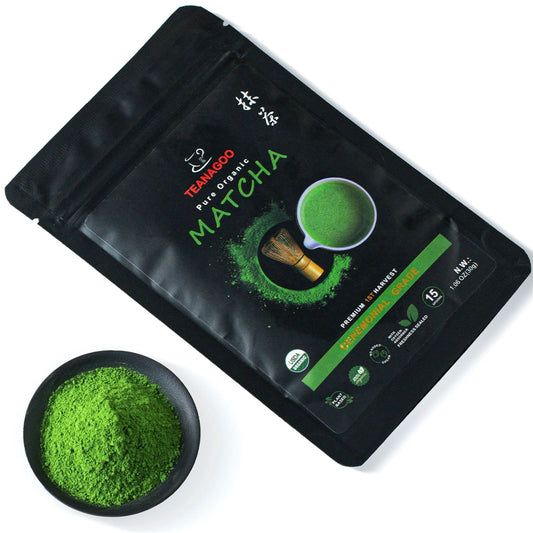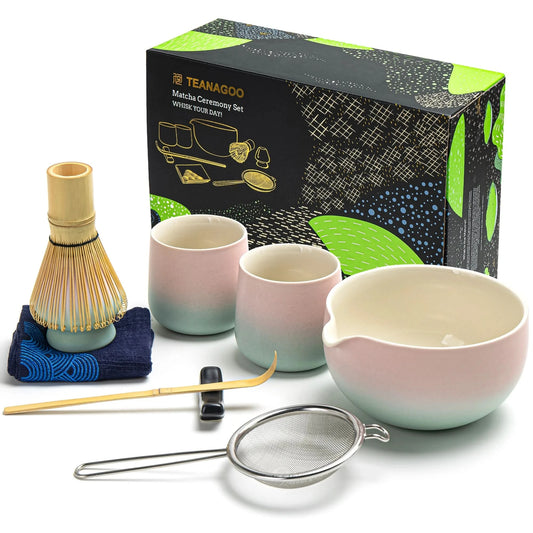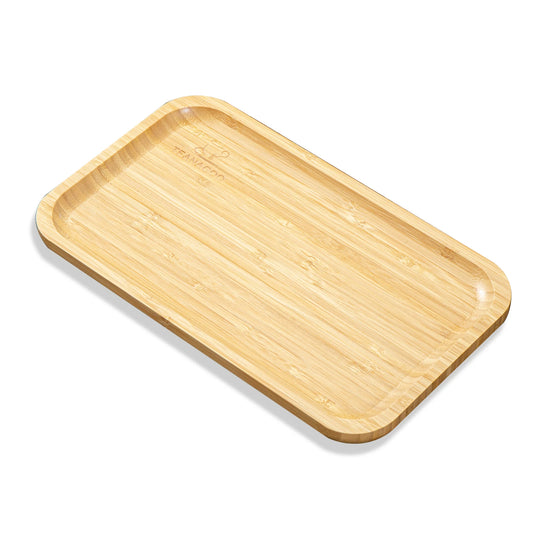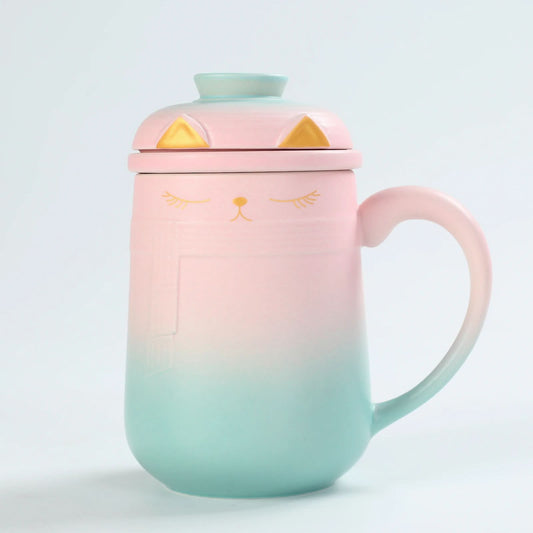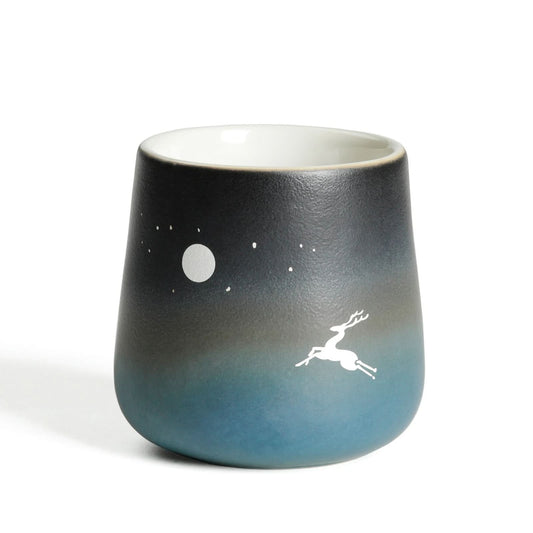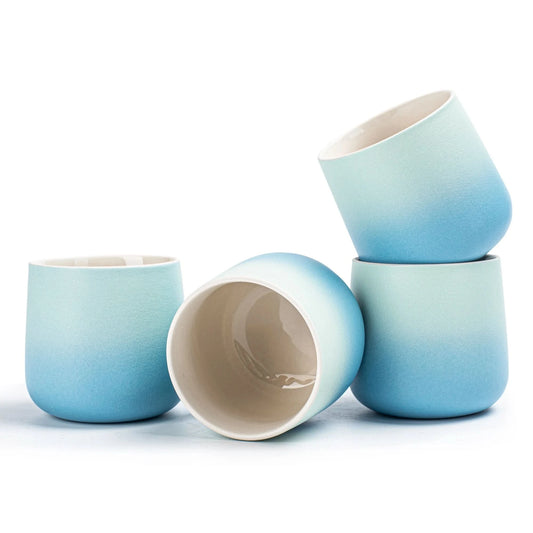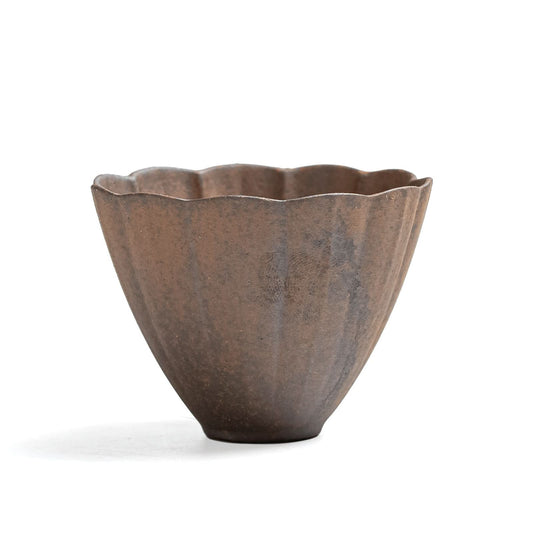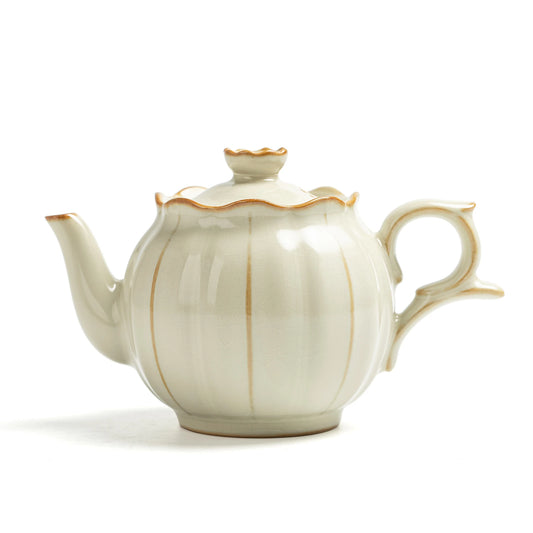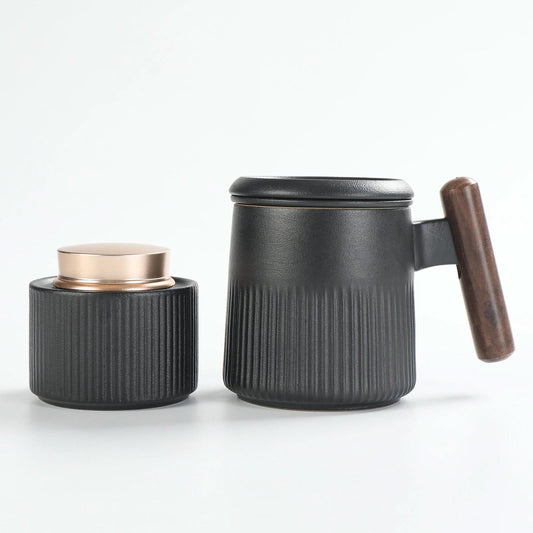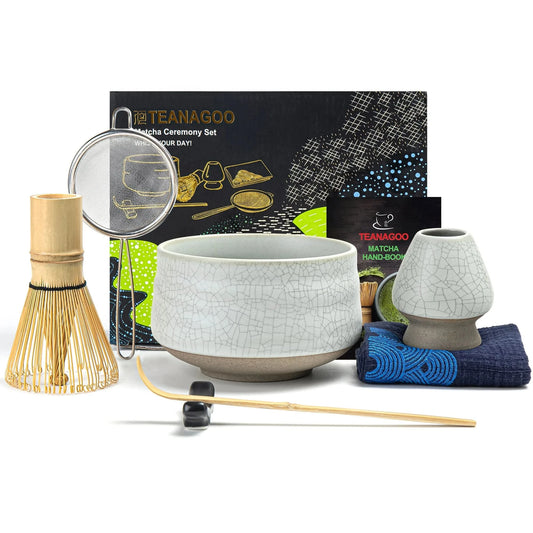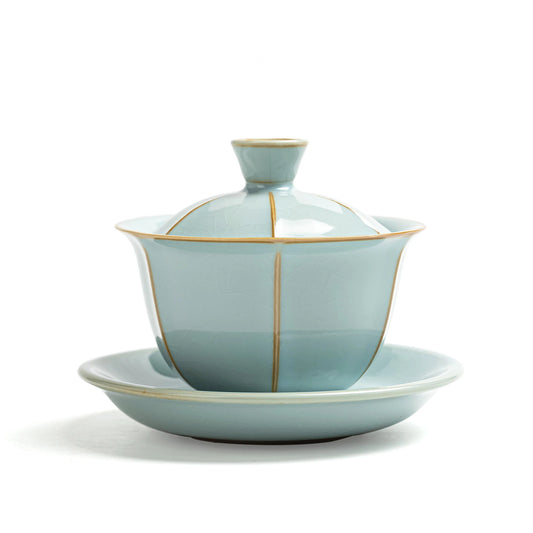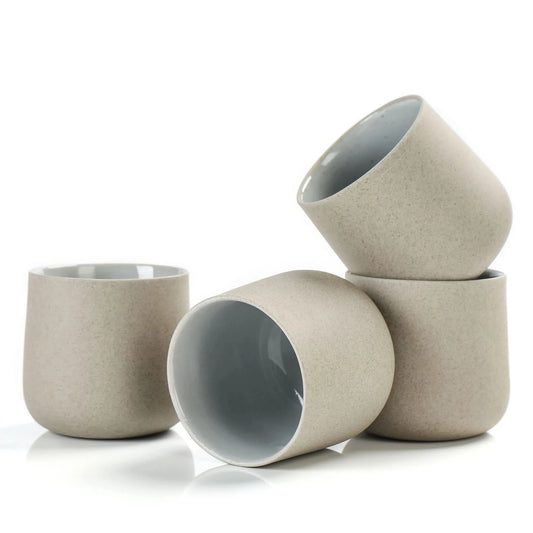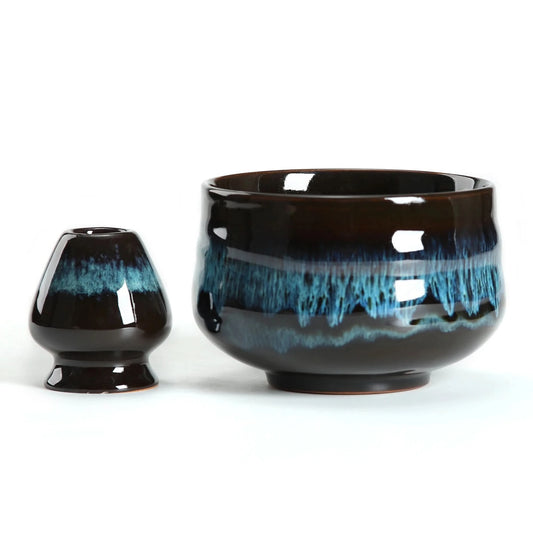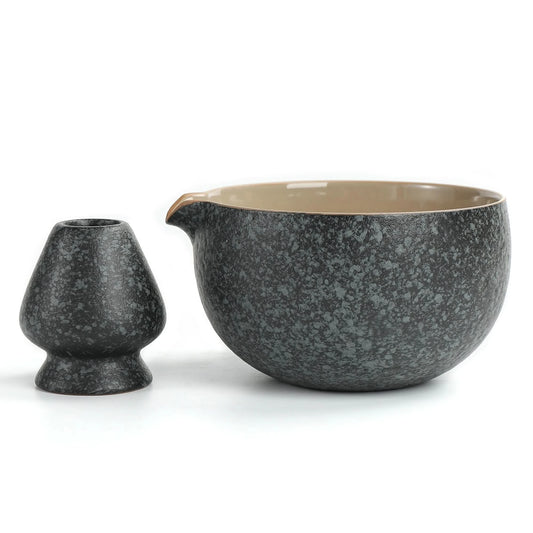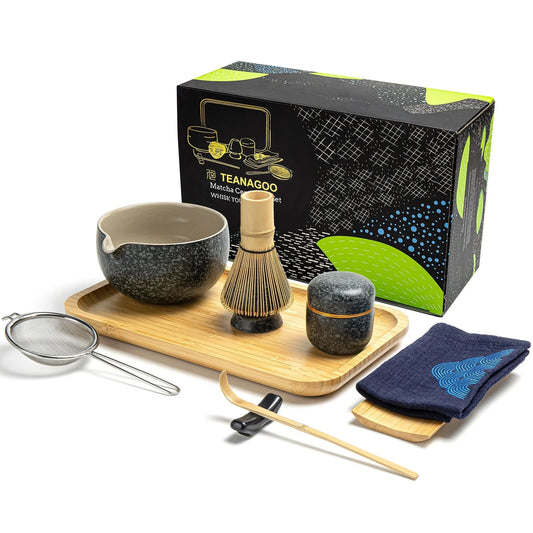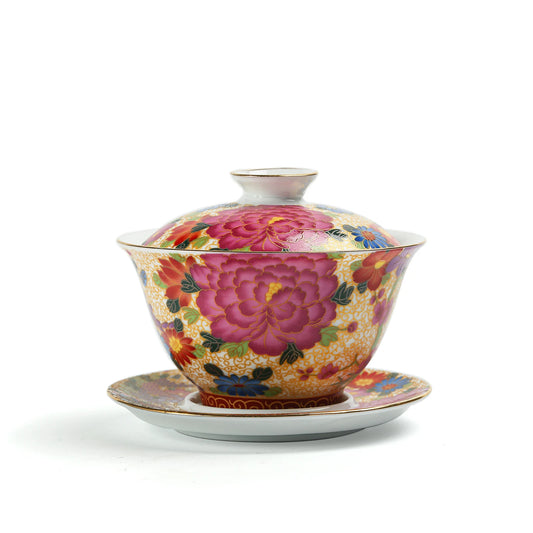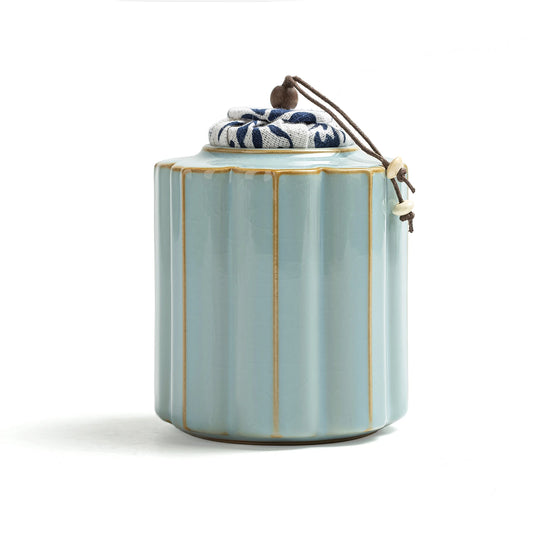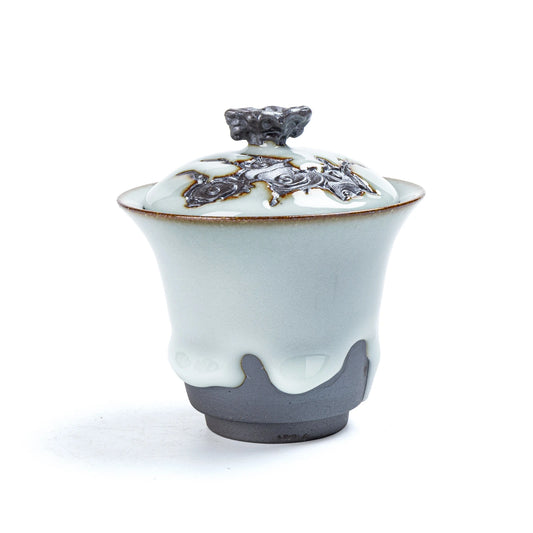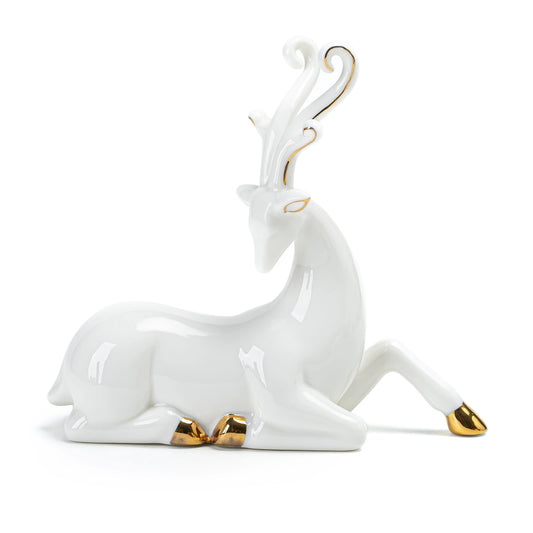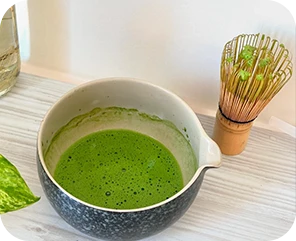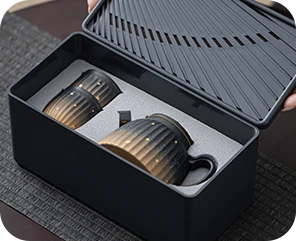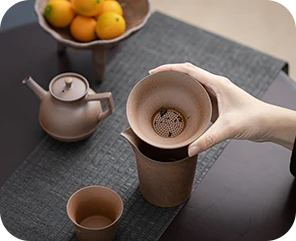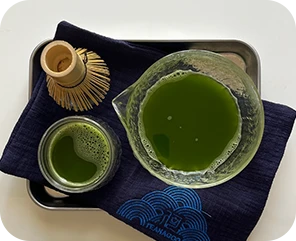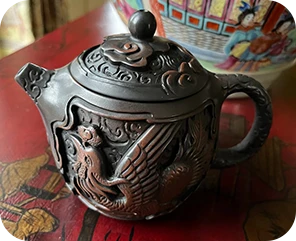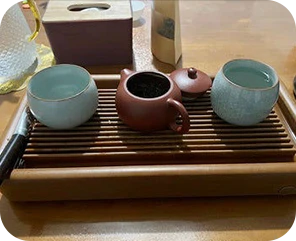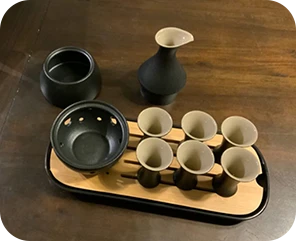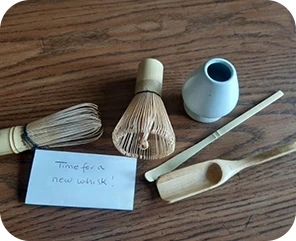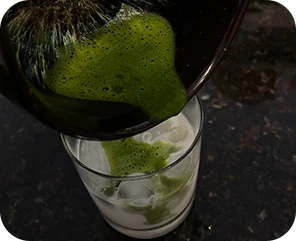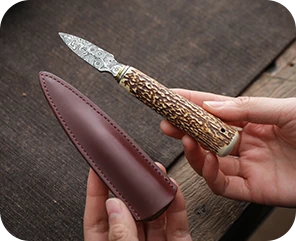Collection: Tea Pot
A teapot is a vessel used for steeping tea leaves or a herbal mix in boiling or near-boilingwater, and for serving the resulting infusion which is called tea. it is one of the corecomponents of teaware.
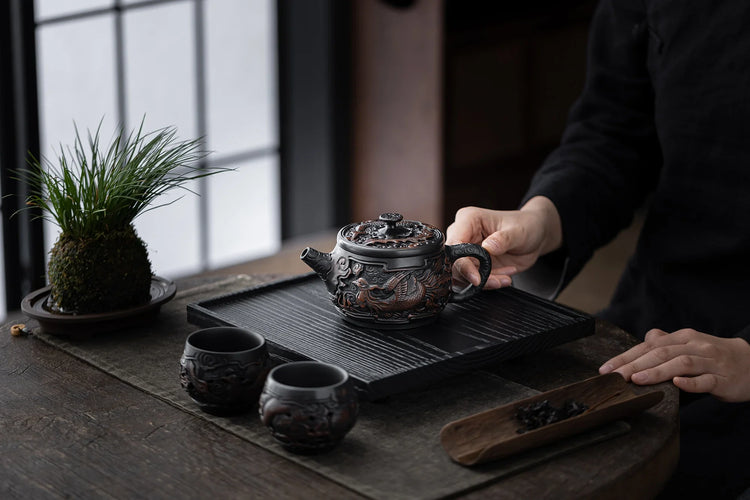
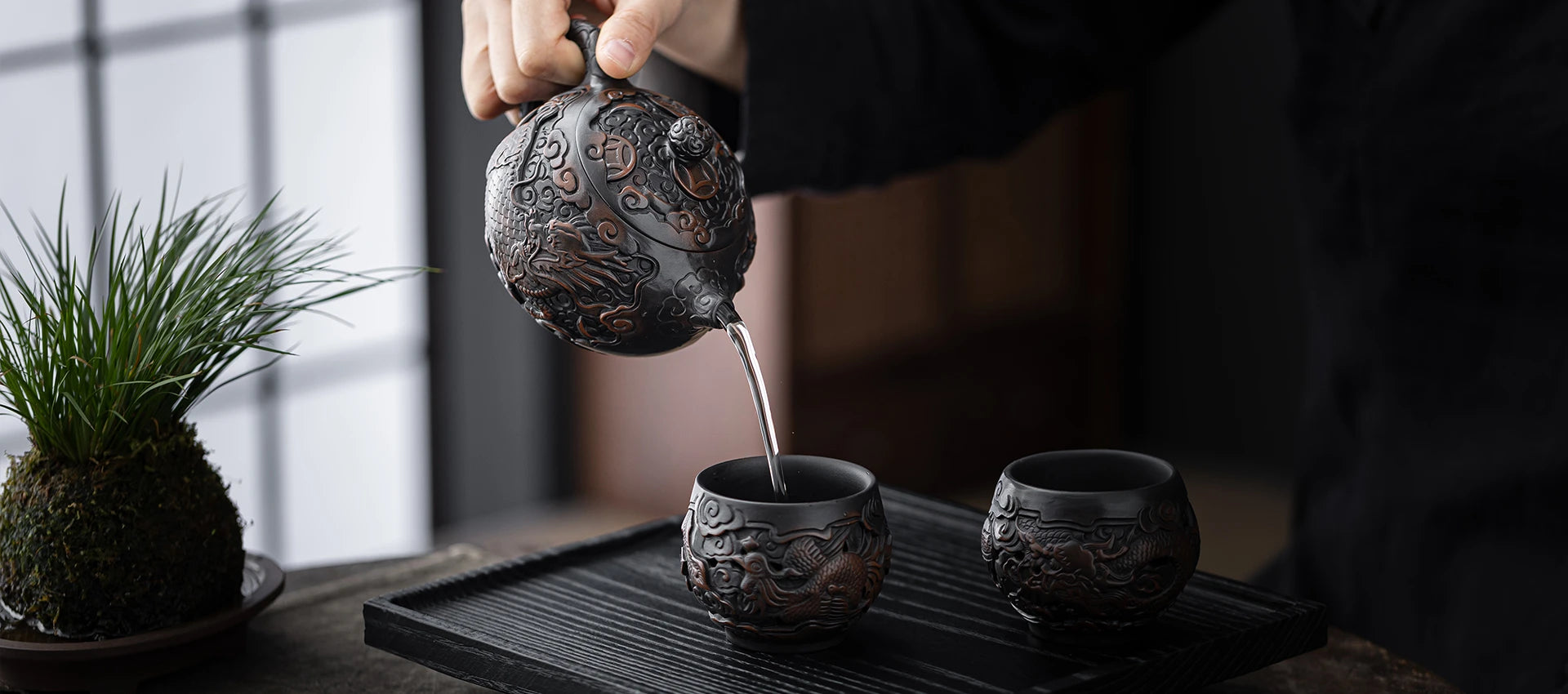
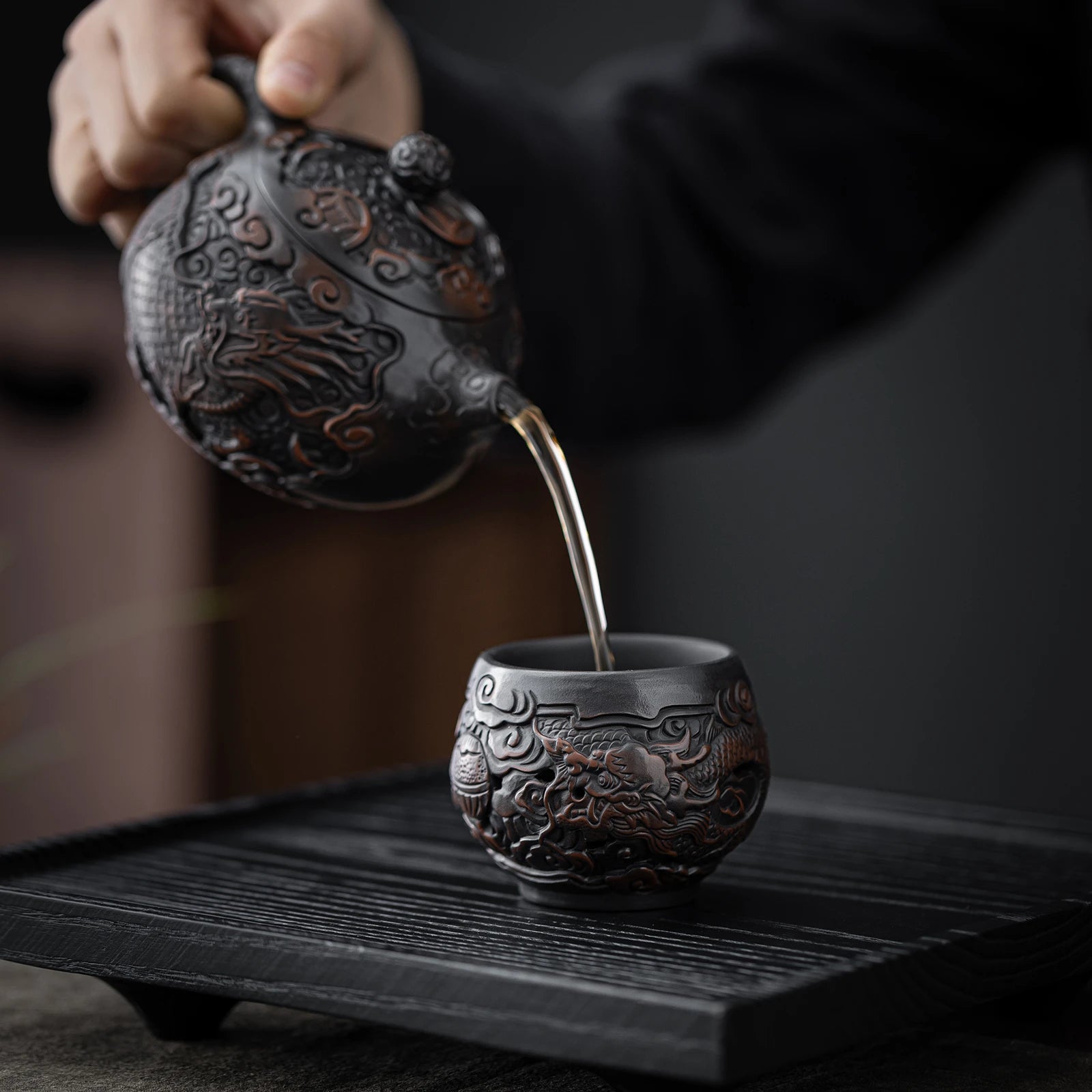
Kylin Teapot,280ml /9.5oz
East tea west pot, loyal to the heritage of traditional ceramic technology
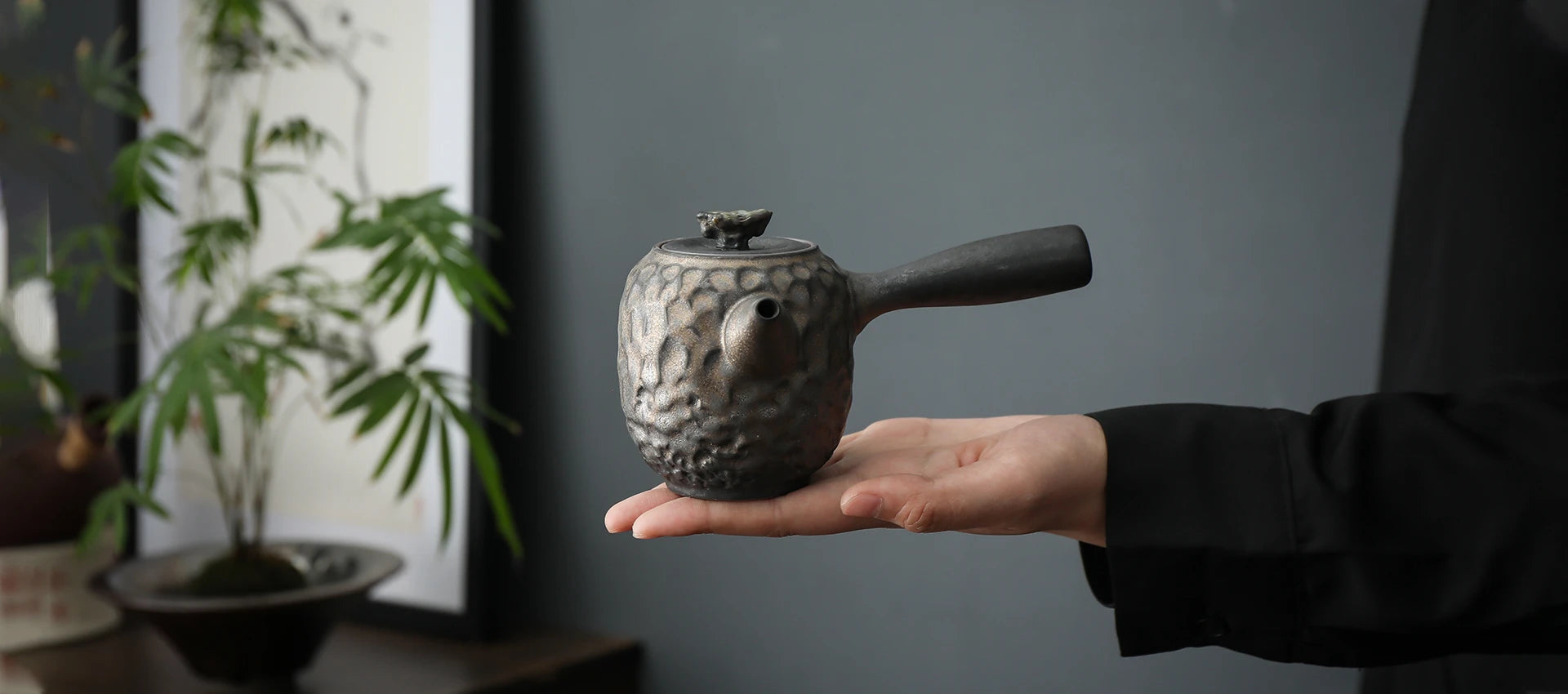
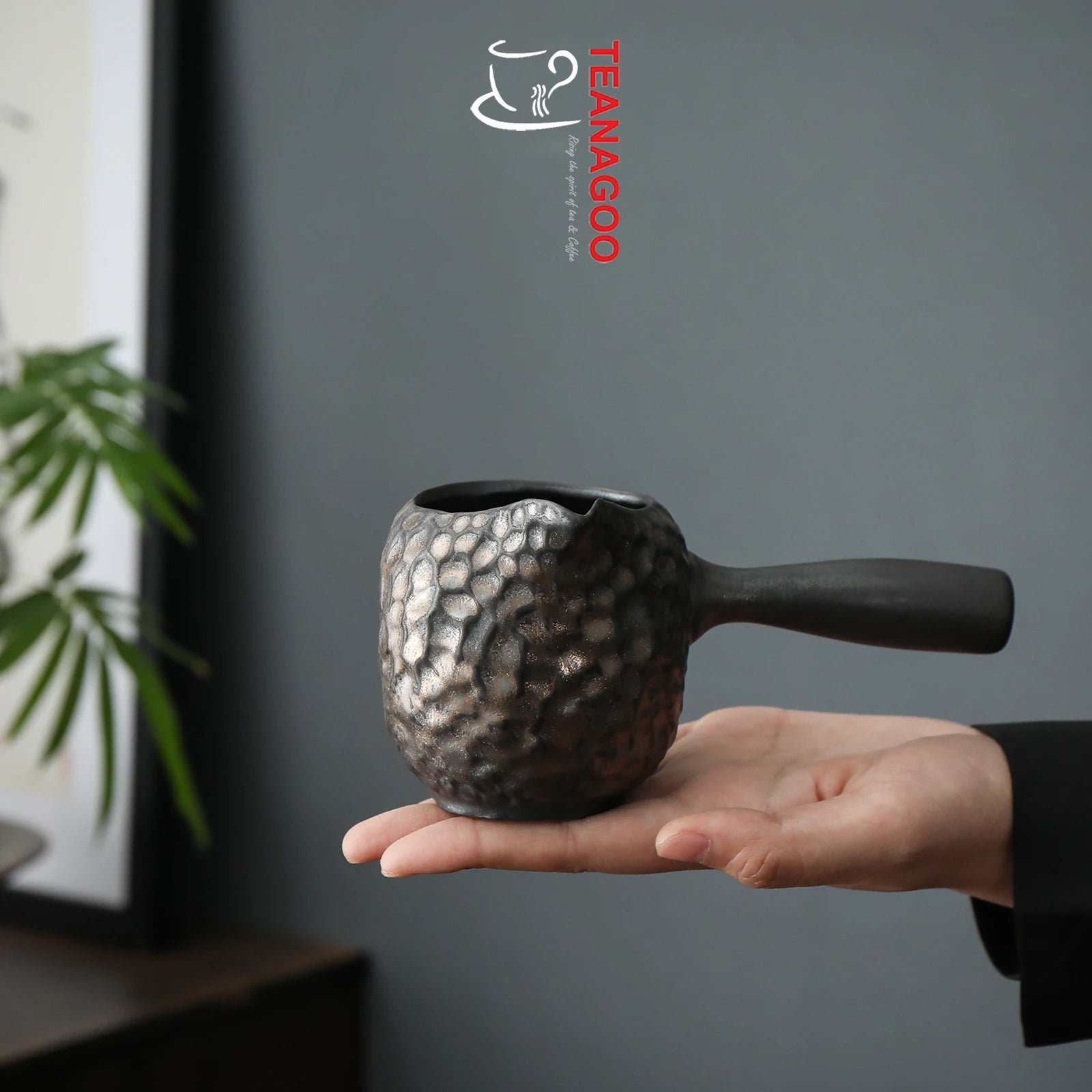
Gilt lron Glaze Ceramic Teapot with Handle
Objects with temperature and soul are worth looking forward to, playing with and collecting.
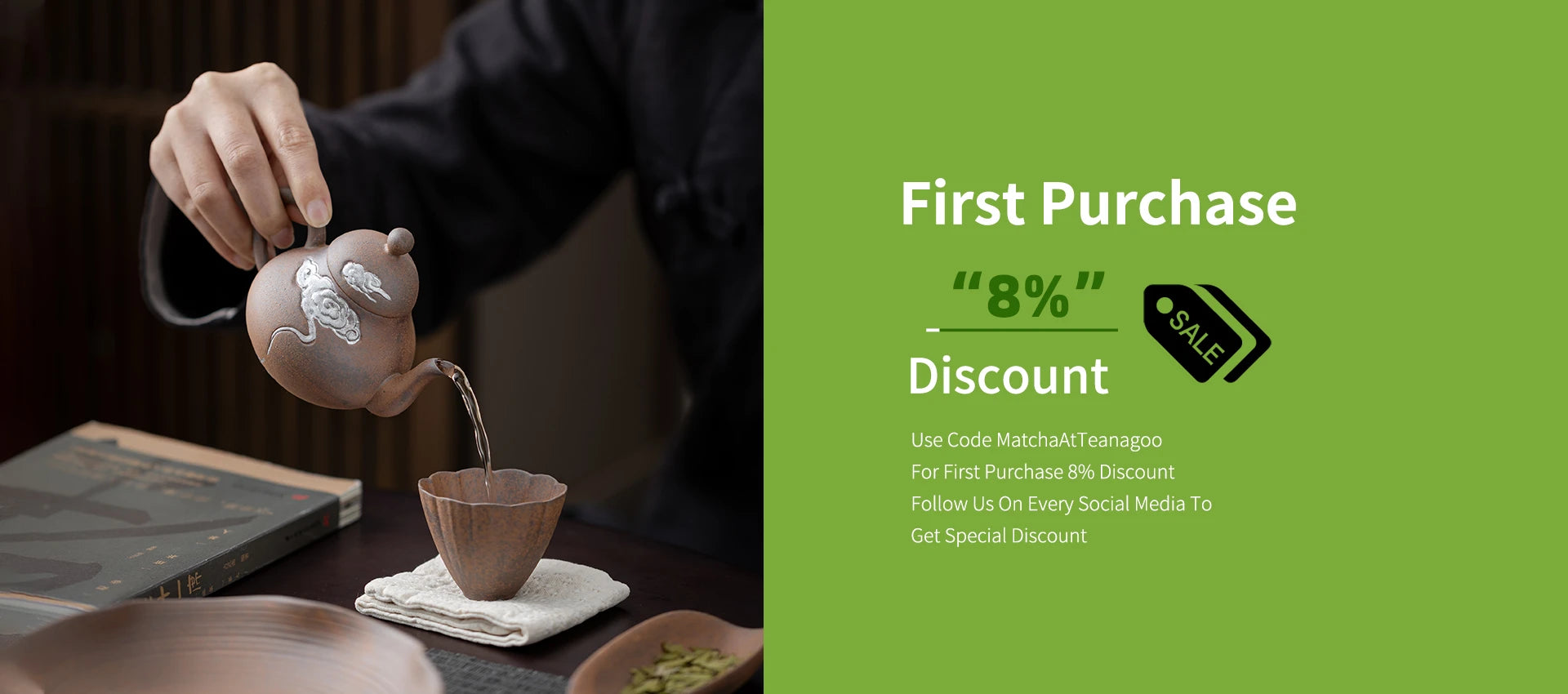
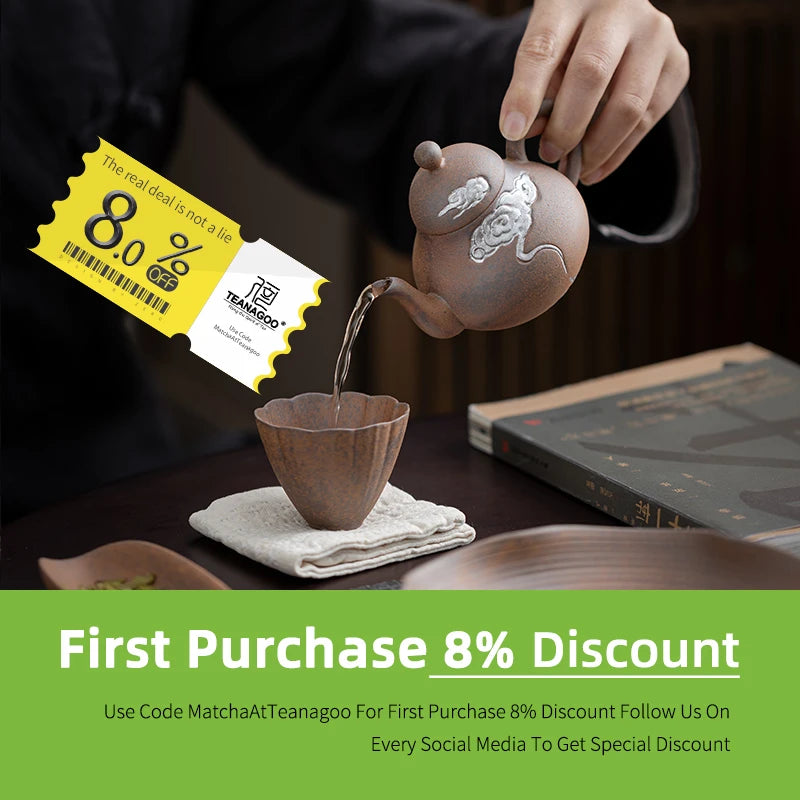
-
Ancient Script Bridge Handle ZEN Teapot Bamboo Green 180ml
Regular price $31.99 USDRegular priceUnit price / per -
Ancient Script Bridge Handle ZEN Teapot Earth Tone 180ml
Regular price $31.99 USDRegular priceUnit price / per -
Ancient Script Bridge Handle ZEN Teapot Shino Ware 180ml
Regular price $34.99 USDRegular priceUnit price / per -
Ancient Script Square Bridge Handle ZEN Teapot Earth Tone 150ml
Regular price $34.99 USDRegular priceUnit price / per -
Ancient Script ZEN Pot Bamboo Green 180ml
Regular price $31.99 USDRegular priceUnit price / per -
Ancient Script ZEN Pot Earth Tone 180ml
Regular price $31.99 USDRegular priceUnit price / per -
Ancient Script ZEN Pot Pearl Drip Glaze 180ml
Regular price $31.99 USDRegular priceUnit price / per -
Ancient Script ZEN Pot Shino Ware 180ml
Regular price $34.99 USDRegular priceUnit price / per -
Auspicious Cloud ZEN Teapot Pearl Drip Glaze 190ml
Regular price $33.99 USDRegular priceUnit price / per -
Auspicious Cloud ZEN Teapot Shino Ware 190ml
Regular price $36.99 USDRegular priceUnit price / per -
Azure Elegance Teapot 160ml
Regular price $25.99 USDRegular priceUnit price / per -
Ceramic Teapot TP07 580ml
Regular price $36.99 USDRegular priceUnit price / per -
Ceramic Teapot with infuser Bronze 250ml
Regular price $26.99 USDRegular priceUnit price / per -
Ceramic Teapot with infuser Bronze 625ml
Regular price $34.99 USDRegular priceUnit price / per -
Ceramic Teapot with infuser Obsidian 250ml
Regular price $26.99 USDRegular priceUnit price / per -
Ceramic Teapot with infuser Obsidian 625ml
Regular price $34.99 USDRegular priceUnit price / per -
Clay Raw Extra Tea Pot 493ml
Regular price $42.99 USDRegular priceUnit price / per -
Clay Raw Super Tea Pot 609ml
Regular price $42.99 USDRegular priceUnit price / per -
Clay Treasure Tea Pot 220ml
Regular price $32.99 USDRegular priceUnit price / per -
Dragon & Phoenix Teapot, 210ml / 7.4oz
Regular price $94.99 USDRegular priceUnit price / per$142.84 USDSale price $94.99 USDSale -
Dragon Teapot,270ml /9.1oz
Regular price $89.99 USDRegular priceUnit price / per -
Dual-Fish Teapot,230ml /7.8oz
Regular price $89.99 USDRegular priceUnit price / per -
Dunhuang Bridge Handle ZEN Teapot Earth Tone 200ml
Regular price $33.99 USDRegular priceUnit price / per -
Dunhuang ZEN Tea Pot Bamboo Green 165ml
Regular price $34.99 USDRegular priceUnit price / per
Hot Selling Product
Choose the style you like and take it home
-
Matcha Powder-Ceremonial Grade Matcha
Regular price From $18.99 USDRegular priceUnit price / per$24.27 USDSale price From $18.99 USDSale -
Matcha Set-Sharing Set Pinky Blue
Regular price $37.99 USDRegular priceUnit price / per$59.99 USDSale price $37.99 USDSale -
Big Serving Bamboo Tea Tray for Matcha - O
Regular price $22.00 USDRegular priceUnit price / per$39.00 USDSale price $22.00 USDSale -
Ceramic Lovely Cat Tea Mug with Infuser & Lid & Color Box Packing
Regular price $21.99 USDRegular priceUnit price / per$26.99 USDSale price $21.99 USDSale -
Elegant Moonlight Deer Double Walled Cup
Regular price $32.99 USDRegular priceUnit price / per$36.99 USDSale price $32.99 USDSale -
Japanese Tea Cups 4 pcs Set Skyblue
Regular price $19.99 USDRegular priceUnit price / per -
Clay Lotus Tea Cup 50ml
Regular price $11.99 USDRegular priceUnit price / per -
Ivory Grace Teapot 190ml
Regular price $25.99 USDRegular priceUnit price / per -
Ceramic Tea Brewing Mug with Tea Canister, Luxury Gift Packing, 340ml/12oz
Regular price $38.99 USDRegular priceUnit price / per$46.99 USDSale price $38.99 USDSale -
Matcha Set-Beginner Set White Web
Regular price $41.99 USDRegular priceUnit price / per$48.99 USDSale price $41.99 USDSale -
Golden Horizon Gaiwan 120ml
Regular price $34.99 USDRegular priceUnit price / per -
Japanese Tea Cups 4 pcs Set Dusty Grey
Regular price $19.99 USDRegular priceUnit price / per -
Matcha Bowl with Whisk Holder Deep Space Skyfall
Regular price $19.99 USDRegular priceUnit price / per -
Matcha Bowl with Whisk Holder Obsidian
Regular price $19.99 USDRegular priceUnit price / per -
Matcha Set-Advanced Set Obsidian
Regular price $52.99 USDRegular priceUnit price / per$74.99 USDSale price $52.99 USDSale -
Porcelain Gongfu Tea Peony Gaiwan 115ml
Regular price $29.99 USDRegular priceUnit price / per$42.84 USDSale price $29.99 USDSale -
Azure Elegance Tea Tin 320ml
Regular price $31.99 USDRegular priceUnit price / per -
Cloud Crest ZEN Gaiwan Pearl Drip Glaze 110ml
Regular price $25.99 USDRegular priceUnit price / per -
Dragon Teapot,270ml /9.1oz
Regular price $89.99 USDRegular priceUnit price / per -
Elegant White Deer Teapets
Regular price $29.99 USDRegular priceUnit price / per
The origin of teapot history
Teapots usually have an opening with a lid at their top, where the dry tea and hot waterare added, a handle for holding by hand and a spout through which the tea is served.Some teapots have a strainer built-in on the inner edge of the spout. A small air hole inthe lid is often created to stop the spout from dripping and splashing when tea is poured.In modern times, a thermally insulating cover called a tea cosy may be used to enhancethe steeping process or to prevent the contents of the teapot from cooling too rapidly.
Dry tea is available either in tea bags or as loose tea, in which case a tea infuser or teastrainer may be of some assistance, either to hold the leaves as they steep or to catch the leaves inside the teapot when thetea is poured.
Early teapots, like those still used in modern Gongfu tea ceremony, are small by westernstandards meant for the individual consumption of tea.5] They use a higher ratio of leavesto water, which enables the brewer to control the variables of brewing to create severalsmall infusions. After brewing, tea would then be decanted into a separate vessel, and distributed into the small cups ofseveral drinkers, and brewed again. This allows the tea to be skillfully brewed, and for the flavor changes to be experiencedthrough the various infusions.[6]
leapots made from pottery materials such as clay have been hand-fired for tens of thousands of vears, oriainally in china.Clay is a popular material for teapots, as they tend to retain heat very well.[7]
Many traditional Chinese teaware is yixing ware. Yixing and other regional clays are left unglazed. This allows the clay toabsorb the flavor of the teas brewed over time, and enhance the flavor of the tea going forward. some Gongfu practitionersdesignate their unglazed pots for specific types, sometimes even specific varietals of tea.
From the end of the 17th century tea was shipped from China to Europe as part of the export of exotic spices and luxurygoods, The ships that brought the tea also carried porcelain teapots. The majority of these teapots were painted in blue andwhite underglaze. Porcelain, being completely vitrified, will withstand sea water without damage, so the teapots werepacked below deck whilst the tea was stowed above deck to ensure that it remained dry.[8]
